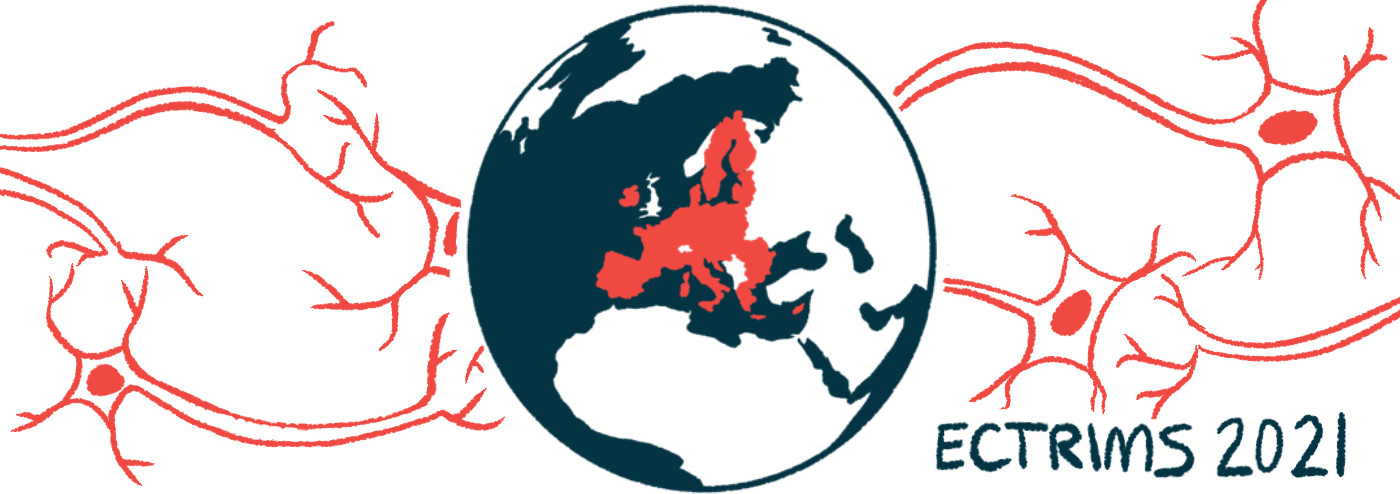#ECTRIMS2021 – Analysis Finds Soliris May Be Better at Reducing Relapses

Note: This story was updated Nov. 2, 2021, to note that Soliris is taken every two weeks, rather than weekly.
Soliris (eculizumab) is more effective than Enspryng (satralizumab) and Uplizna (inebilizumab) at lowering the risk of relapse in adults with neuromyelitis optica spectrum disorder (NMOSD) who are positive for aquaporin-4 protein autoantibodies (AQP4-IgG), according to an indirect comparison analysis.
Soliris’ superiority was observed both alone and in combination with immunosuppressive treatments.
These findings were shared by Dean M. Wingerchuk, MD, with the Mayo Clinic, Phoenix, at the 37th Congress of the European Committee for Treatment and Research in Multiple Sclerosis (ECTRIMS), held virtually Oct. 13–15.
The oral presentation was titled “Indirect comparison analysis of FDA-approved treatment options for adults with aquaporin-4 immunoglobulin G-positive neuromyelitis optica spectrum disorder.”
In NMOSD, the immune system wrongly produces antibodies that attack proteins in cells that support the nervous system, causing inflammation in the optic nerve and spinal cord. Most patients have high levels of antibodies against the AQP4 protein.
Currently, three therapies are approved for NMOSD patients with anti-AQP4 antibodies in the U.S.: Alexion Pharmaceuticals’ Soliris, Horizon Therapeutics’ Uplizna, and Roche’s Enspryng.
Soliris works by blocking the complement system, a group of blood proteins involved in immune and inflammatory reactions, while Uplizna targets B-cells, the immune cells that produce antibodies such as those against AQP4. Enspryng suppresses the activity of interleukin-6, a signaling molecule that drives inflammation in NMOSD.
Administered directly into the bloodstream, Soliris is taken once every two weeks while Uplizna is given twice a year. Enspryng is injected under the skin every four weeks.
Wingerchuk and colleagues in the U.S. and Japan set out to compare the effectiveness of the three therapies in adults with AQP4-IgG-positive NMOSD.
Given that no clinical trial to date has done such an assessment, the researchers conducted an indirect comparison based on published studies up to September 2020 from appropriately-controlled trials testing each therapy individually.
A total of 29 studies from four placebo-controlled clinical trials — covering 551 patients — were included in the meta-analysis. The trials evaluated the therapies alone (monotherapy) or in combination with immunosuppressive treatments (ISTs), such as mycophenolate, azathioprine, or glucocorticoids. Uplizna was tested only as a monotherapy.
The trials included in these analyses were the N-MOmentum Phase 2/3 clinical trial (NCT02200770), the PREVENT Phase 3 trial (NCT01892345), and the SAkuraStar (NCT02073279) and SAkuraSky (NCT02028884) Phase 3 trials.
Time-to-first relapse was the only outcome measure reported across all trials, and was, therefore, used in the comparison efficacy analysis.
The researchers conducted three separate analyses: one comparing the three therapies alone, another comparing Soliris and Enspryng, given alone or in combination with ISTs, and the last comparing the Soliris-IST combination with the Enspryng-IST combo.
Results showed that, when given alone, Soliris treatment led to a significantly reduced risk of first relapse, compared with both Enspryng (by 90%) and Uplizna (by 89%).
When given alone or in combination with ISTs, Soliris was also associated with a 76% reduced risk of first relapse relative to Enspryng.
Patients treated with the Soliris-IST combo were 59% less likely to experience a first relapse, compared with those given the Enspryng-IST combo, but this difference did not reach statistical significance.
Moreover, Soliris consistently showed the highest probability (84.5%–98.7%) of being the superior treatment option for delaying time to first relapse in the three separate analyses.
In the absence of head-to-head clinical trials, these findings, based on an indirect comparison of available trial data, provide “important evidence about the relative efficacy of these three drugs, with two analyses showing superiority of [Soliris] and its mechanism against complement,” Wingerchuk said.
The data suggest that Soliris, given alone or in combination with immunosuppressive treatments, is more effective at preventing relapses than Enspryng or Uplizna in adults with NMOSD who are positive for AQP4-IgG, the researchers noted.
Among the study’s limitations are the limited number of clinical trials, and significant differences between them, such as the duration of follow-ups. Also, no comparative analyses on patients’ relapse rate, disability, quality of life, as well as safety measures were possible due to “inconsistent reporting between trials,” Wingerchuk said.
The study was funded by Alexion.








